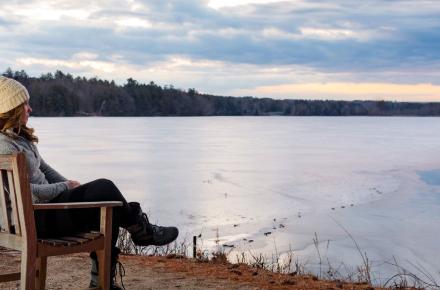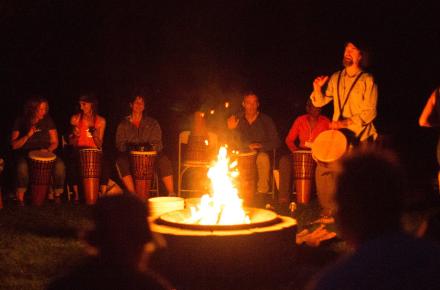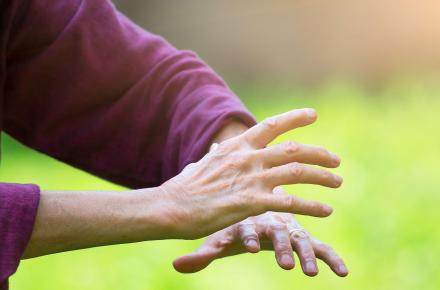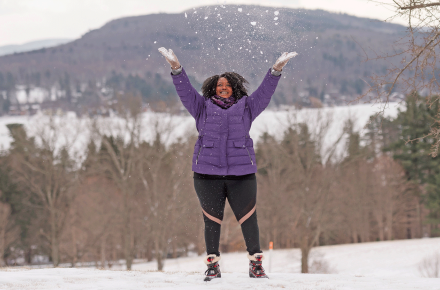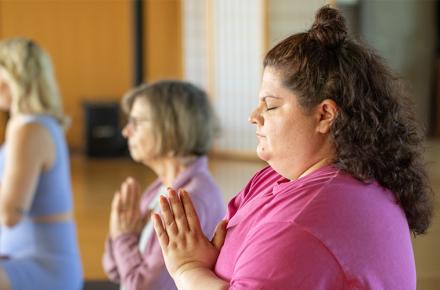Honoring Your Half Chaturanga: The Practice of Taking It Down a Notch
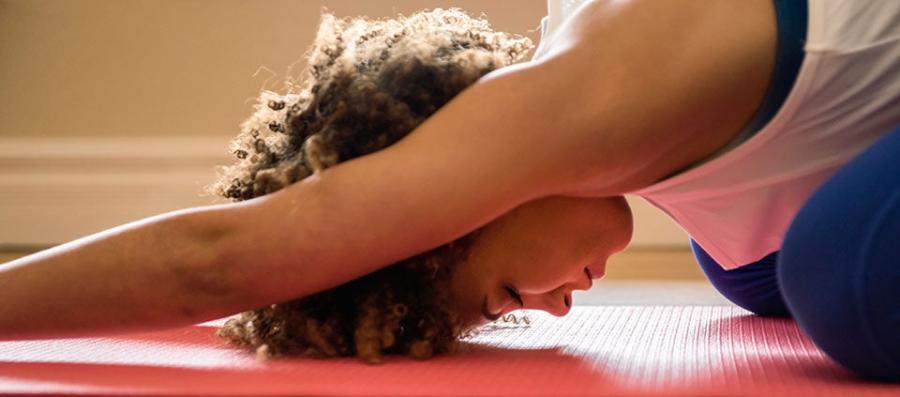
by Janet Arnold-Grych
As much as we acknowledge that yoga is a personal practice, we’ve all compared ourselves to our fellow yogis at one time or another. We’ve seen our internal, harmonized focus on body and breath shift to the woman in the front row double-pumping all her Chaturangas, or the man on the left executing a picture-perfect Warrior I. In response, our own version feels suddenly flat, so we amp it up—only to have our shoulders or hamstrings forcefully object. Sometimes, it’s a yoga practice all its own to step back and choose not to assume a pose, or to bring it down a notch or two.
For many of us, yoga starts as a physical endeavor, so it’s a short step to judge our practice by our ability to tackle increasingly challenging poses. It’s true that, as we gain strength and muscle memory, and refine our alignment and breath awareness, our physical practice often expands and we want more. Exploration is a great thing, but growth is most beneficial when it comes from a place of awareness rather than reactivity.
In the context of a yoga practice, asteya, or non-stealing—one of the yamas (restraints) described in Patanjali’s eight limbs of yoga—can mean not attempting a pose if we haven’t first established the foundation for it, in body and mind. Discernment requires that we place our ego to the side and make our decisions from a place of intention, mindfulness, and truth.
To shift awareness from external to internal cues, Sudha Carolyn Lundeen, a faculty member for the Kripalu Schools, suggests keying in to intention each time you step on the mat. “Stop and ask yourself, What is my intention for my practice today?” Sudha suggests. “Can you identify what you really need? Be aware of what is going on physically, mentally, emotionally. Feel it and choose.”
That richer awareness can direct our exploration of the five koshas, or layers, described in the yogic texts. The outermost layer is the physical body; moving inward, we find the breath body, followed by the mental body, the wisdom body, and finally the bliss body. As we become more attuned to each one, we are able to tap into the power of the next.
Some days, we might seek to appropriately deepen our practice in the physical layer—and that’s great. Other days, we might choose to highlight the breath and cultivate calm awareness in the mental body. In those instances, physically pushing beyond our edge can take us out of that plane of greater awareness. Deciding not to do a full backbend, for example, can be a more meaningful choice than disrupting the breath, feeding the ego, and potentially causing harm because that’s not where your body is today.
Because the ego is so persuasive, saying no to a pose can be difficult, as can quelling the internal voice that judges our practice by its outward execution. “Drop the judgment,” says Sudha. “Can you go beyond that to a more equanimous state of observation?” In choosing our poses, and letting the outcome go, letting the ego fall away, we advance our broader goal. We elevate our relationship to our practice and we wake up a little more.
“We need to notice,” says Sudha. “You can’t make choices from a habituated mental state—doing the same thing you always do, without noticing what’s really happening or needed on a physical or psychological level. When we actively choose, we are present—and what we do anywhere is what we do everywhere. We carry the choices with us that we make on the mat.”
Ultimately, to define our practice by our physical accomplishments is to shortchange yoga and ourselves. If we define yoga as a tool to bring the mind into stillness, as stated in the Yoga Sutras, then the physical becomes just one guidepost on a deeper journey. Standing in our goals and honoring our current physical, mental, and emotional state, we can make the yogic choices that strengthen our overall practice—and, in the end, it doesn't matter if our Chaturangas are half, whole, or not there at all.
Janet Arnold-Grych is a yoga teacher and writer whose work has been published in Elephant Journal, Huffington Post, Third Coast Digest, and other outlets.
© Kripalu Center for Yoga & Health. All rights reserved. To request permission to reprint, please e-mail editor@kripalu.org.





























